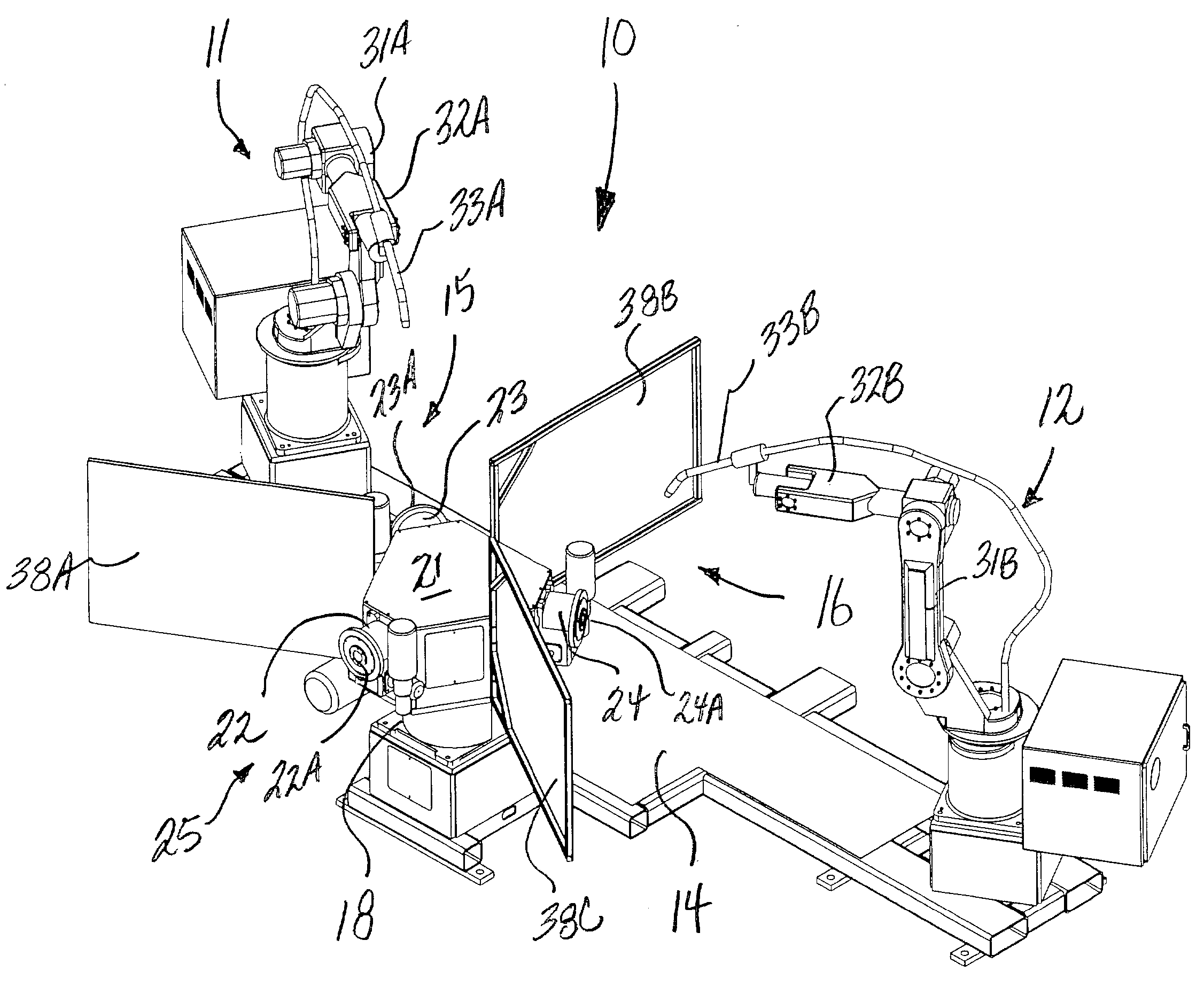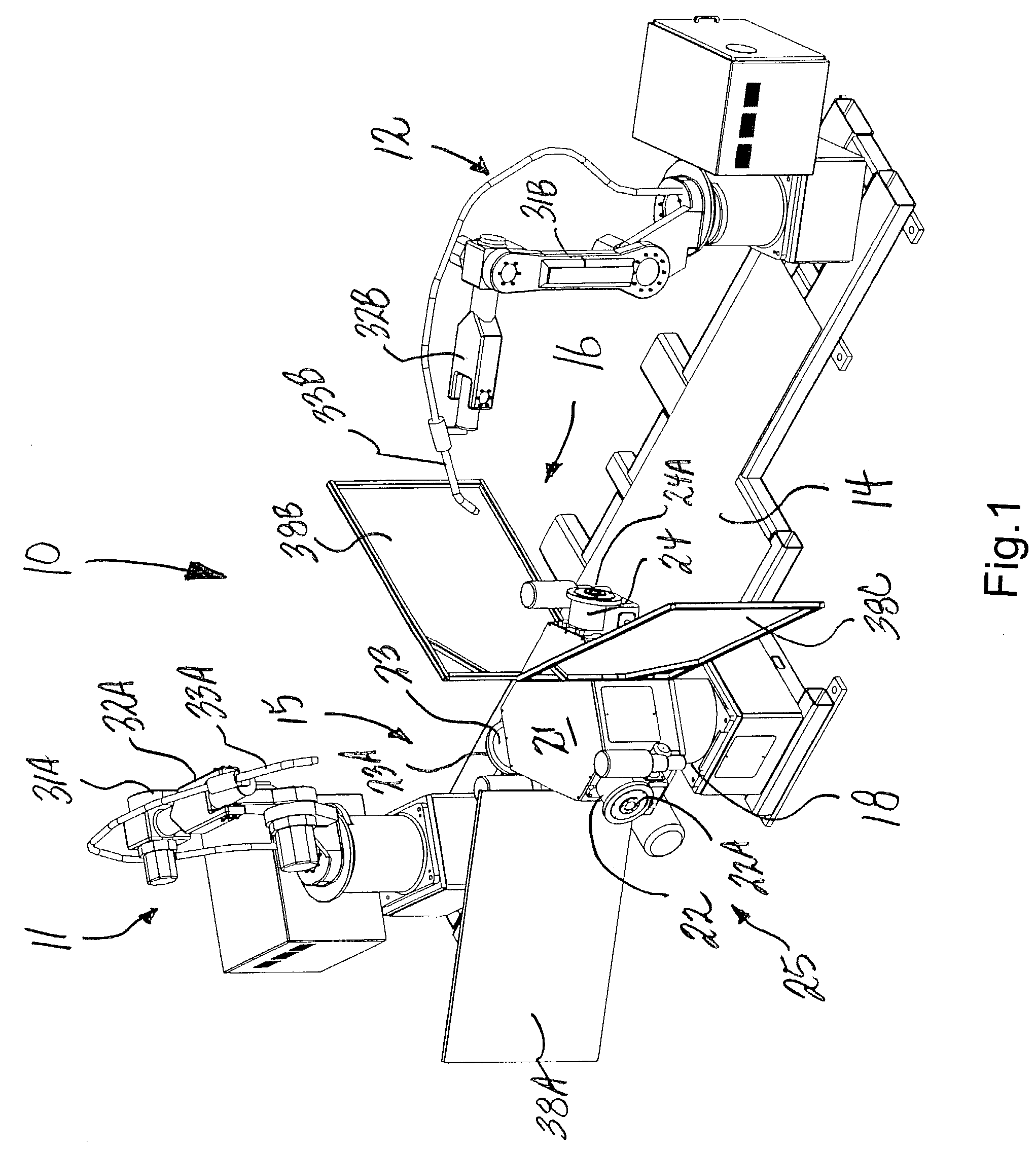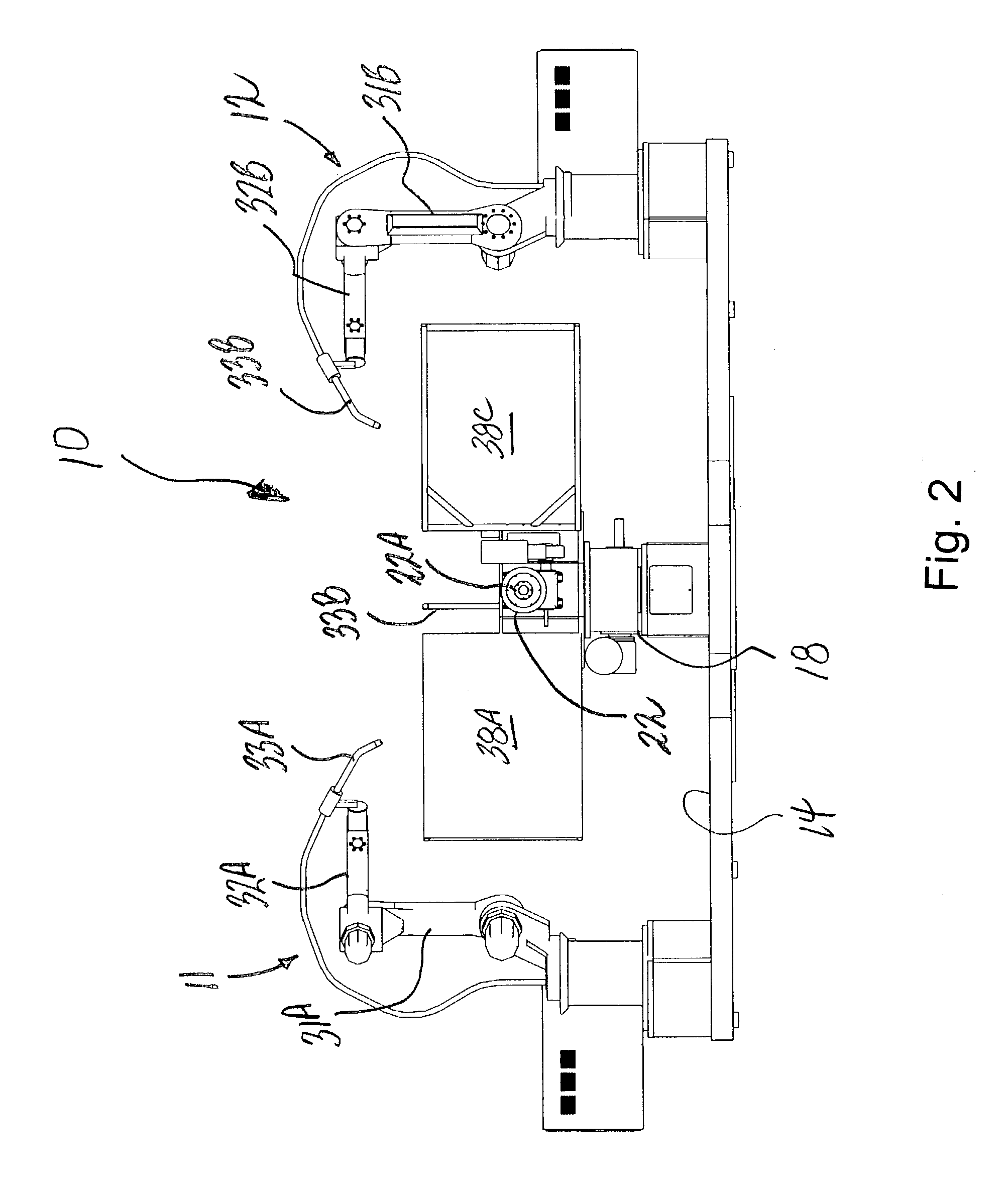Multi-station robotic welding assembly
- Summary
- Abstract
- Description
- Claims
- Application Information
AI Technical Summary
Benefits of technology
Problems solved by technology
Method used
Image
Examples
Embodiment Construction
[0030] Referring now specifically to the drawings, a multi-station robotic welding assembly according to the present invention is illustrated in FIGS. 1-3, and shown generally at reference numeral 10. The assembly 10 is especially applicable in a production environment for welding items such as bumpers, foot plates, headlight supports, arm rests, and other components commonly used in all-terrain vehicles (ATVs) and golf carts. The assembly 10 includes first and second arc welding robots 11 and 12 attached to a common mounting platform 14 and located in respective weld stations 15 and 16. A rotatable fixture base 18 is mounted to the platform 14 between the robots 11, 12, and includes a junction box 21 and three indexers 22, 23, and 24 adapted for carrying respective fixtures used for holding workpieces to be welded. The fixtures "F" and "W" are illustrated in FIGS. 4-8, discussed below. Each fixture is custom designed and secured directly to a face plate 22A, 23B, and 24A of the ind...
PUM
| Property | Measurement | Unit |
|---|---|---|
| Angle | aaaaa | aaaaa |
| Angle | aaaaa | aaaaa |
Abstract
Description
Claims
Application Information
 Login to View More
Login to View More - R&D
- Intellectual Property
- Life Sciences
- Materials
- Tech Scout
- Unparalleled Data Quality
- Higher Quality Content
- 60% Fewer Hallucinations
Browse by: Latest US Patents, China's latest patents, Technical Efficacy Thesaurus, Application Domain, Technology Topic, Popular Technical Reports.
© 2025 PatSnap. All rights reserved.Legal|Privacy policy|Modern Slavery Act Transparency Statement|Sitemap|About US| Contact US: help@patsnap.com



